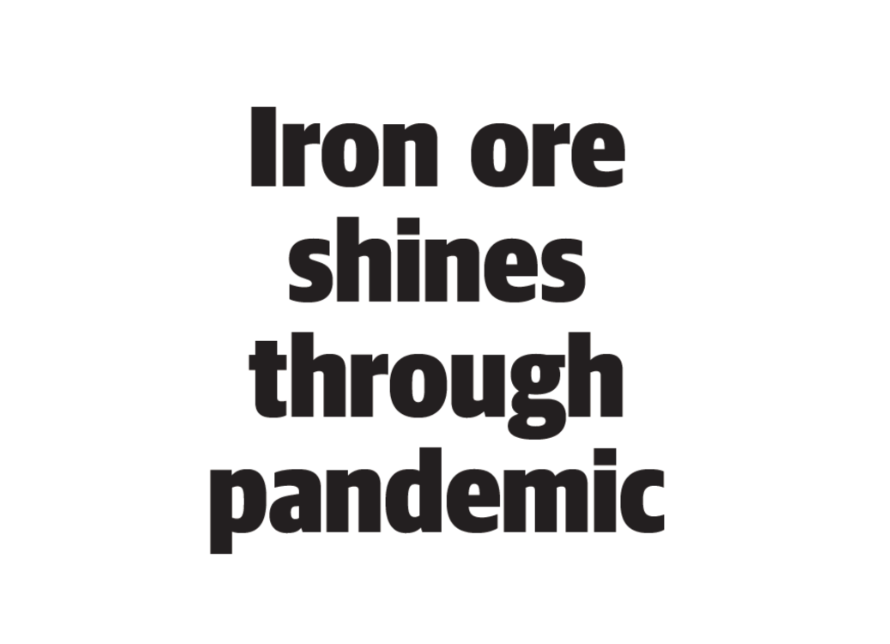Article by Stuart McKinnon courtesy of Weekend West

WA’s powerhouse iron ore sector provided a beacon of hope this week as Federal and State Budget revenue from most other sources shrunk.
In the case of the State Budget, iron ore helped the WA Government post an unlikely surplus of $1.2 billion. If the price of the steel-making commodity holds near current levels this financial year, the Federal Government is expected to enjoy a $6.1b windfall.
The iron ore price has remained defiantly high in recent months, owing to resilient demand from China, backed by the government’s stimulus spending that targets infrastructure projects. In spite of the coronavirus, Chinese steel production in the six months to the end of June was up 1.4 per cent on the same period last year.
At the same time, the world’s second biggest iron ore producer Brazil has experienced coronavirus-related supply disruptions and continues to operate at less than full capacity because of safety concerns at several mines following a deadly tailings dam disaster in January last year.
Meanwhile, WA’s iron ore miners have managed to operate uninterrupted through the pandemic. The State’s main iron ore harbour Port Hedland reported record monthly exports of 51.7Mt in June with last month’s 45.6Mt representing a 9 per cent increase on September 2019.
Iron ore delivered $7.6b of a total $8.45b in State Government royalties last financial year, $2.1b more than expected, and is expected to generate $7.4b of a total $8.3b this year. However that figure could be considerably higher because it is based on an conservatively estimated average annual iron ore price of $US96.60/t, which is below the US$114/t it has averaged this year and well shy of the $US123.45/t it was trading at yesterday.
And for every $1/t the actual price exceeds the predicted price over the course of the year, State coffers enjoy an extra $85 million in royalty revenue.
Association of Mining and Exploration Companies chief executive Warren Pearce said the State’s mining industry had helped carry WA through the worst global economic contraction in 100 years.
“The brightness of WA’s mining investment future must be the envy of the world with an estimated $129 billion worth of resource projects in the development pipeline, and more than 10,000 jobs that could be created through their delivery,” he said.
The WA Chamber of Minerals and Energy noted this week that WA’s strong mining and resources sector and its ability to safely continue operating through the pandemic had led to an estimated 1.25 per cent growth in the State’s economy in 2020-21.
CME chief executive Paul Everingham, pictured, said the State and Federal budgets had highlighted how WA’s mining and resources sector had provided a financial buffer against the devastating economic impact of COVID-19.
Global ratings agency S&P said iron ore made WA an outlier, placing it in good stead relative to other States.
But the State Government has predicted prices to fall to a long-run average of $US64/t by the middle of next year which would see iron ore royalties drop by $2.6 billion in 2021 22 to $4.8 billion, representing a 34.6 per cent reduction.